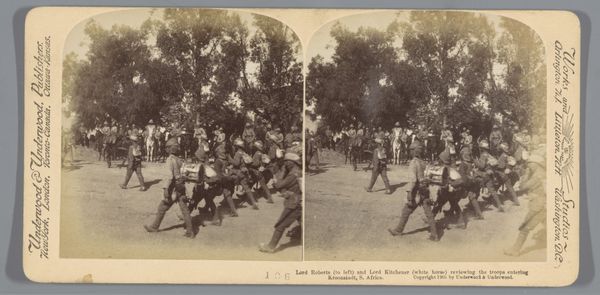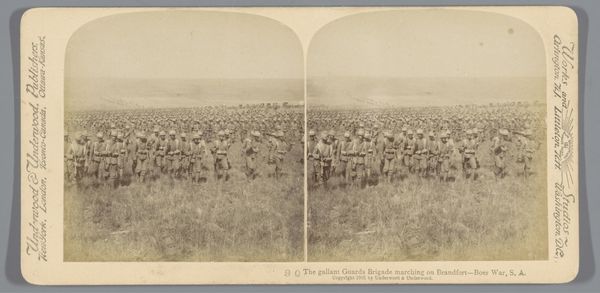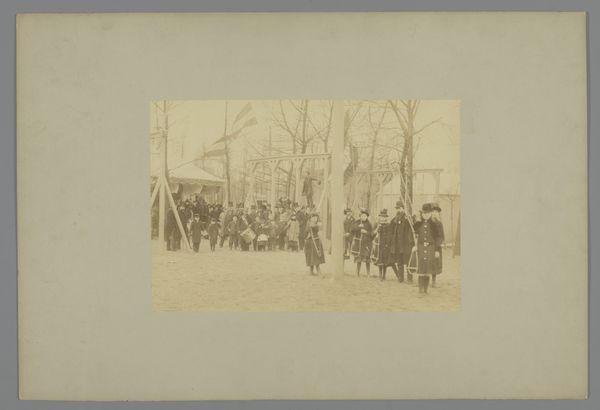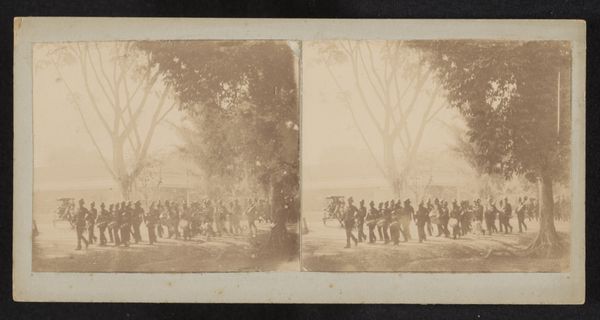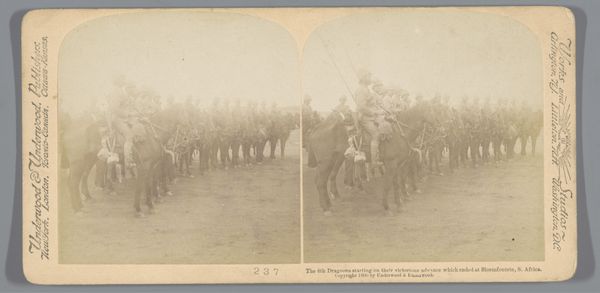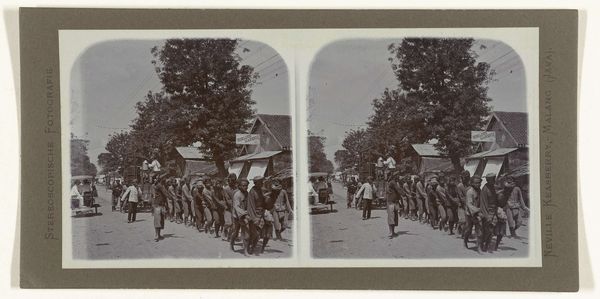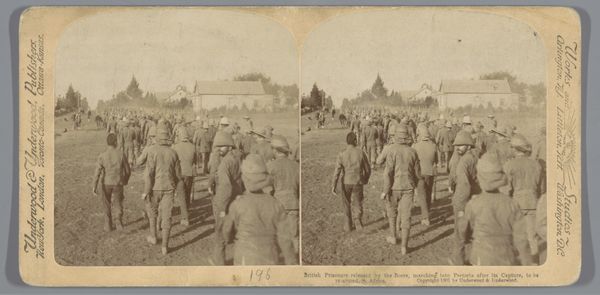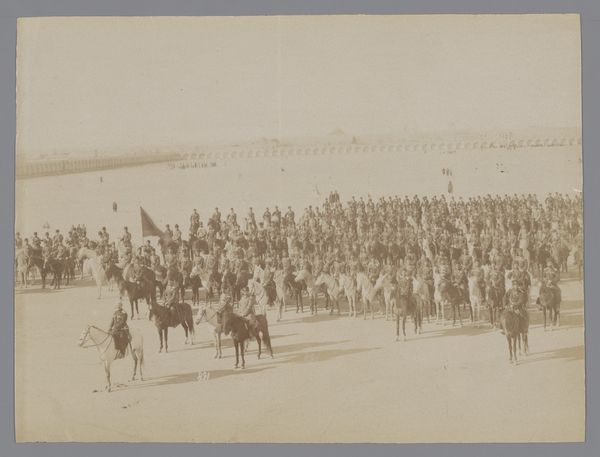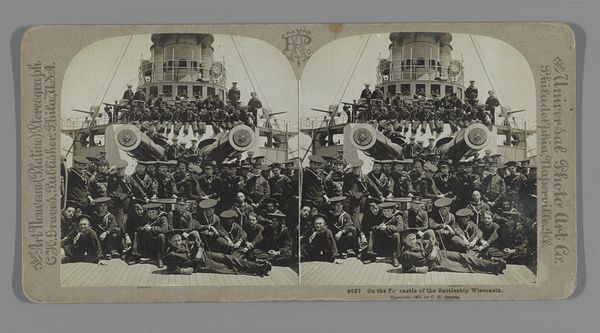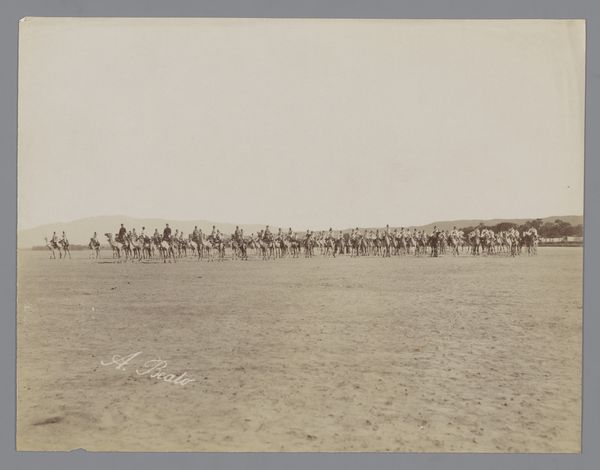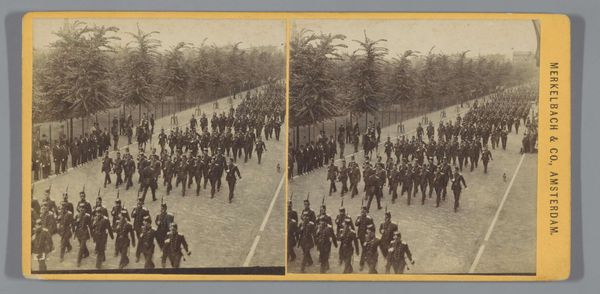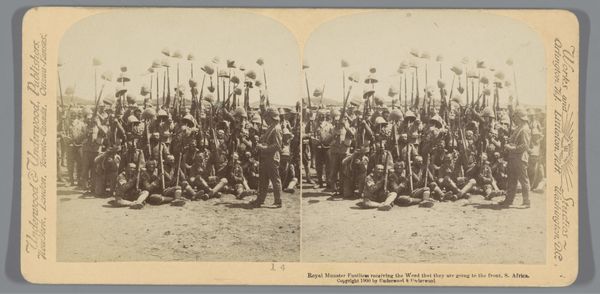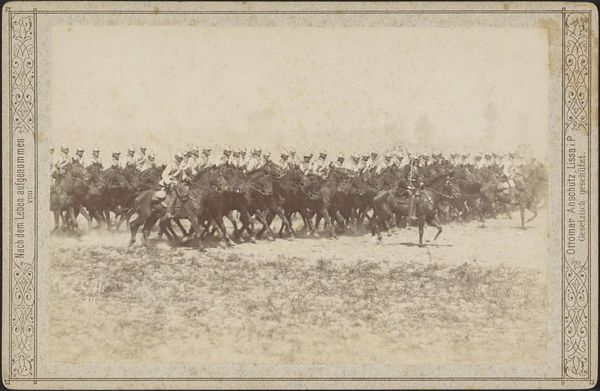
Het Britse leger marcheert Kroonstad binnen onder bevel van Lord Roberts (Frederick Sleigh Roberts) en Lord Kitchener (Horatio Herbert Kitchener) 1901
0:00
0:00
photography, albumen-print
#
landscape
#
photography
#
history-painting
#
albumen-print
Dimensions: height 88 mm, width 178 mm
Copyright: Rijks Museum: Open Domain
Editor: This albumen print from 1901 depicts the British Army marching into Kroonstad. It's titled "Het Britse leger marcheert Kroonstad binnen onder bevel van Lord Roberts (Frederick Sleigh Roberts) en Lord Kitchener (Horatio Herbert Kitchener)." The composition, with lines of marching soldiers, evokes a strong sense of imperial power, but I’m left wondering about the individuals within that power structure. What social dynamics do you see reflected in this photograph? Curator: It's crucial to consider the historical context. This photograph documents a key moment during the Second Boer War, a conflict driven by British imperial ambitions and the control of resources in South Africa. The seemingly orderly march masks the violence and exploitation inherent in colonialism. Think about the photographers, Underwood & Underwood – what role did they play in shaping public perception of this war? Editor: I hadn't considered their role in shaping public opinion back home. The image feels very staged and presented from the victor’s perspective. Do you think the format, as a stereoscopic card, contributed to that effect? Curator: Absolutely. The stereoscopic format was intended to bring the scene to life, making the viewer feel present at this “historic” moment. This creates an immersive experience of British military might and a normalization of imperial conquest. And the lack of focus on the local population subtly reinforces the idea of their absence, their dispossession. We must always ask, whose story is being told, and whose is being erased? Editor: This makes me realize how many layers of power are embedded within seemingly simple images like this. The visual culture itself served colonial ambitions. Curator: Precisely! Photography wasn't merely a tool for documentation; it was an instrument of power, shaping narratives and justifying imperial projects. Looking critically at images like this allows us to deconstruct those narratives and understand the ongoing legacies of colonialism.
Comments
No comments
Be the first to comment and join the conversation on the ultimate creative platform.
